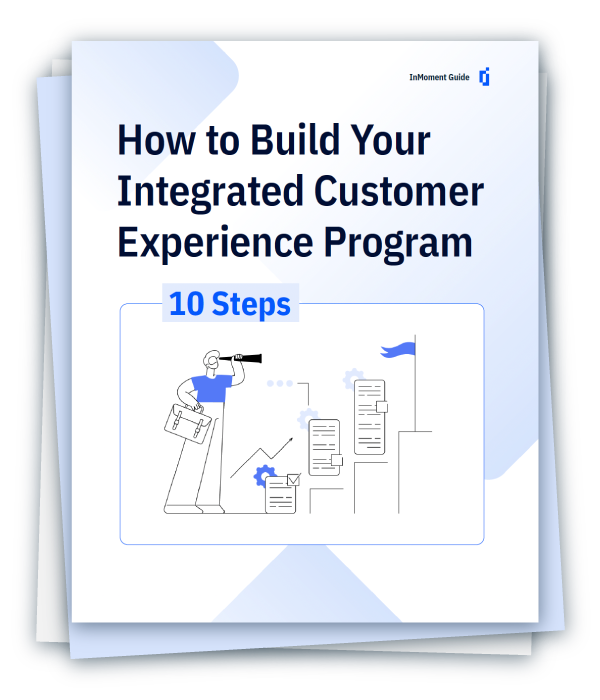Elves Rule: Employees ‘Make’ The Customer Experience, and Should Be Recognized for It

This article was originally published on CustomerThink
Santa Claus (with the help of Mrs. Claus) gets much of the credit for spreading Yule joy; but, isn’t it really the elves who are most responsible? Several years ago, business consultant Matthew T. Grant interviewed me for his blog site (http://www.matthewtgrant.com) and the subject was how, through their employees, companies can move beyond satisfaction to create real customer loyalty behavior. Years later, much of what we discussed still rings true, like a silver carol bell. Here is some of what was covered.
- Positive customer experience with employees at your company has a far greater impact on loyalty than does satisfaction with a product or service. Indeed, studies have shown that 70 percent of customer behavior is driven not by product quality or efficiency of delivery or advertising, but instead by interactions with your people.
- You cannot create, or sustain, customer loyalty behavior without committed employees. More than commitment to the company or the brand, more than commitment to productivity or innovation or even the organization itself, we are talking about commitment to the customer. The key is to focus on developing and supporting employees so that they, in turn, focus on the customer. Ideally, you want every employee to be not just a brand champion, but an advocate for the value provided by the organization.
- Employee advocacy is a framework for linking employee commitment to business results by emphasizing the need for the entire organization to create unique, value-add customer experiences. Optimizing customer experience, then, is everybody’s job.
- The focus on customer experience, inherent to employee advocacy, reflects the core concept of ‘value’. Value has two components: a rational, functional side and an emotionally-based, relationship side. Most companies focus on optimizing the functional side through quality management and process improvement.
- Functional elements of value can be important when it comes to meeting customers’ basic expectations, but they often aren’t particularly differentiating and they don’t drive long-term customer trust and customer loyalty behavior. The latter are more frequently engendered by the emotional connection with the company, which in turn is fostered by the attitudes and actions of employees toward the customers.
- While “loyalty” is generally a term associated with marketing, organizational behavior and employee development are not. Accordingly, the impetus for change usually comes from outside marketing. The move toward commitment and advocacy is generally driven, and championed, by senior executives, though, of course, they can’t do it alone. A traditionally successful partnership will consist of senior leadership working in concert with operations, market research and human resources.
- Market research provides the employee advocacy data and the insights. The biggest impact this has rests in demonstrating the difference between internal perception of value and external perception. Service managers and representatives, salespeople, and other employees are often out of sync with customers in terms of perceived value of services, products, and features.
- One way to uncover just how in-sync or out of sync employees are is to ‘mirror’ customer surveys. For example, ask representatives from the organization to answer questions posed to customers as they believe the customers themselves would answer them. Conducting this kind of research will quickly uncover the gaps in perception and help highlight the need for change.
- For their part, HR can help institutionalize and formalize employee advocacy, and can help cascade this out to the rest of the organization. You want and need their help, but you also need to make sure that you are building in redundancies and diagnostics so that they feel comfortable.
- Senior management needs to get everyone marching behind the banner of ‘optimizing the customer experience.’ They need to state and restate this again and again. Before they do that, of course, they have to accept that organizational focus and stakeholder centricity are issues of concern. And that can be a real challenge.
Who in the organization doesn’t own the relationship with the customer, either directly or indirectly? Recalling the work of W. Edwards Deming, he believed that everyone in the organization is “either serving the customer or supporting someone who does.” This means that the ideal of commitment and advocacy needs to permeate the entire enterprise.
Unfortunately, this is rarely the case. Instead, many companies find that about 10 percent of their staff exhibit advocate qualities, 15 percent may be actively sabotaging the customer relationship and experience, and the remaining 75 percent are neither saboteurs nor advocates, but could, potentially, move in one direction or the other. What is needed is the kind of research and analysis which will find out where there is overlap between the advocating and committed elite and the rank and file. What is dragging them down toward negativism, and what are they already doing that just needs to be encouraged?
The real question is this: Do you want everyone to be like the advocates and is the enterprise willing to do what it takes to get them there? We can take a lesson from Santa and his corps of elves, the advocates of a joyous Christmas.


